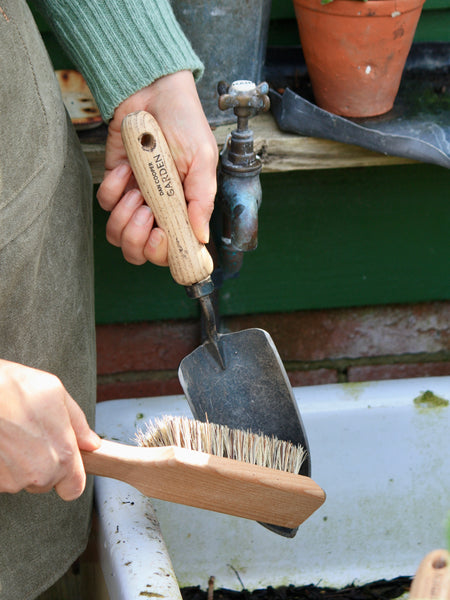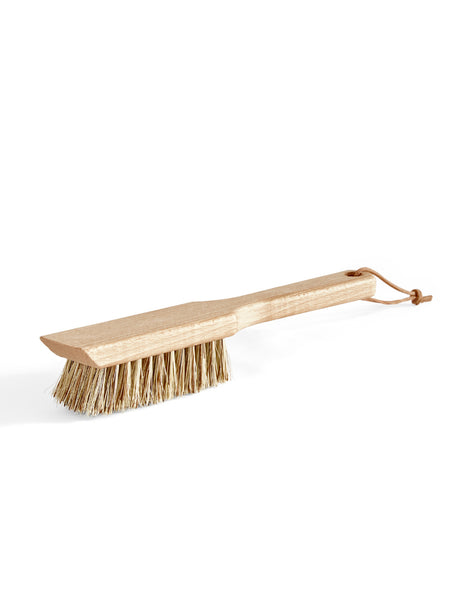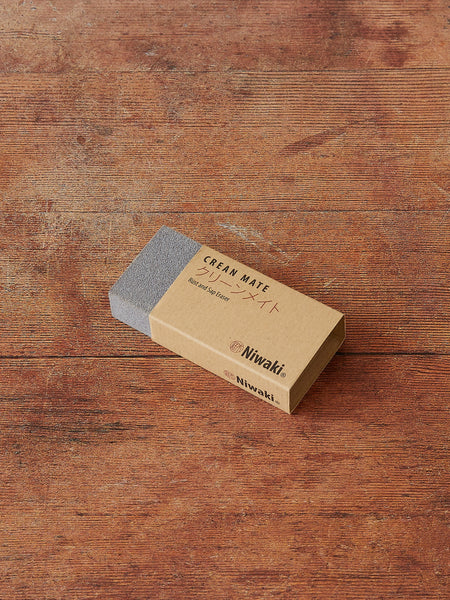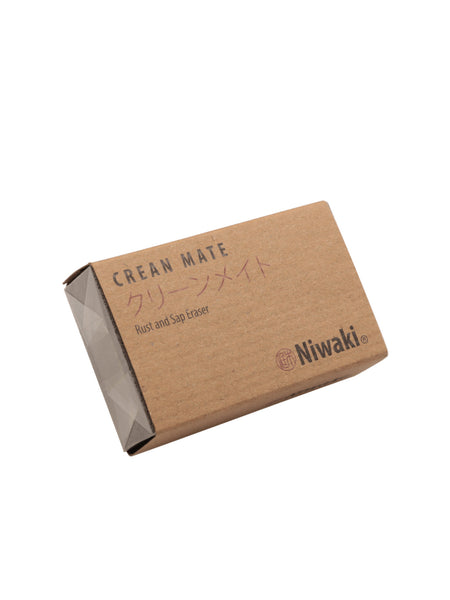My Signature hand tools epitomise everything Dan Cooper Garden is about - they’re simply designed and made to last a lifetime. Having tried and tested each one myself, I know they’re a delight to use. There are currently thirteen tools in my signature range, and I add new pieces every 4-6 months. They’re all made in The Netherlands by a manufacturer with 125 years of forging experience. They’re made from ultra-tough, high-carbon steel with an attractive, burnished finish. The handles are made from sustainably sourced ash. They’re durable, well-balanced and comfortable to use, but it’s worth noting that the quality and thickness of the steel means they’re a little heavier than some cheaper tools. There are no fancy finishes or coatings that might wear off over time, and they’re ideal if you garden on heavy or stony soil because they’re so sharp and robust.
In this post, I explain what makes each tool unique and how you might use it. I’ve also made an accompanying video to guide you through each tool’s key features.
Hand Trowel
This is a classic hand trowel with an elegant, scooped blade. It has a sharp edge all the way around, helping it slice through heavy, compacted soil. This hand trowel would feature in a list of my three most essential garden tools. It can be used for planting, weeding, and scooping compost and is the perfect partner for my Signature hand fork, which I’ll introduce later.
Tulip Trowel
A trowel with a difference. It’s called a tulip trowel because it’s shaped like a tulip flower. It has the same scooped profile as the classic hand trowel, but instead of one point, it has three, plus two deep, V-shaped notches. You could describe it as a hybrid between a fork and a trowel.
A tulip trowel is perfect if you have very heavy soil or ground full of roots, as it will cut while digging. It’s ideal for making planting holes in congested areas of planting.
Dutch-Style Planting Trowel
My Dutch-style planting trowel looks different from other trowels, with a longer handle and flat blade shaped like the ace of spades. Like many of my tools, it’s a design that’s been used for a long time and similar trowels are still used to plant the famous bulb gardens at Keukenhof every autumn.
A Dutch-style planting trowel is used differently from other trowels, relying on leverage rather than a digging action. The blade is plunged into the ground and pulled forward to create a V-shaped pocket for planting bulbs or young plants. When making the next V-shaped pocket, the one in front of it is closed, making quick work of planting in rows. This trowel is ideal for planting tulips because the blade is roughly three times the height of a tulip bulb, which is the depth at which you should plant them.
Some people find the lever action easier on their joints than the digging action, making this tool a popular choice.
Garden Scoop
The mother of all trowels, my garden scoop has a large capacity for gathering and distributing compost, grit, grass seed or animal feed. It’s deeply curved to prevent the contents from falling over the sides and has a sharp leading edge. It's a godsend when filling pots with compost as it scoops up three times as much as a classic hand trowel. It’s designed to be tough and hard-working, so it’s heavier than most of my other tools. Nonetheless, I find it indispensable in my potting shed.
Dandelion Weeder
The dandelion weeder is my most popular tool. It has a long, flat blade with a forked tip, like a snake’s tongue. It’s designed to remove plants with long tap roots, including dandelions, thistles and docks, where it’s essential to remove as much of the root as possible: if roots are left behind, they may resprout.
The dandelion weeder is plunged into the ground at an angle alongside the offending plant, severing the root deep down so it can be pulled out almost intact. You can use it in lawns and borders. Dandelions are pretty and attractive to pollinators, but you can have too much of a good thing when they start to spread!
Lazy Lawn Weeder
This curious tool is something my grandparents would recognise as a daisy grubber. It’s used to remove shallow-rooted plants like daisies and plantains from lawns. Now we recognise the value of non-grasses to wildlife, we tend to be more tolerant of invaders, but occasionally, they need removing. The forked tines at the tip of the tool are poked into the ground on either side of the plant, and the scooped profile helps you to rock the weed up and out with little effort or damage to your lawn. Whenever you hold one of these, you hold a piece of garden history.
Cape Cod Weeder
The Cape Cod weeder has an interesting history. It was designed by early American settlers and works on the pull. When you draw the blade towards you, it will slice through emerging weeds just below ground level. If you leave them where they fall, they’ll decompose and add nutrients to the soil. A Cape Cod weeder is a brilliant tool for weeding between rows of vegetables, and if turned on its side, it’s very effective at getting weeds out from tight spaces, for example, between rocks.
Hand Hoe
This classic hand hoe is nice and light with a sharp cutting edge. Simply pull it towards you over the surface of the soil, and, hey presto, your weeds will be no more! Turned on an angle, it’s brilliant for making shallow drills to sow flower and vegetable seeds.
Hand Cultivator
My hand cultivator is the twin of the hand hoe, made in a very similar way but with three fiercely sharp tines. It’s the perfect tool for breaking up the soil surface for sowing seeds or grubbing up shallow-rooted weeds. It is also brilliant for hooking fallen leaves out from between plants in the autumn.
Claw Cultivator
This claw cultivator is a beefier, wider version of the hand cultivator. It has thick, rounded tines, making it better suited to stony soils or even working in gravel. It’s brilliant for aerating compacted soil, preparing beds for planting, and gathering leaves and debris. It’s one of my favourite multipurpose tools.
Hand Fork
This fork is beautifully made and incredibly strong. The three tines are sharpened towards the tips, helping them sail through the soil and reducing the effort you need to put in. Alongside a hand trowel, this is an indispensable piece of garden kit.
Bulb Planter
Unlike some flimsy ones offered for sale, this bulb planter is built like an ox with a hollow shaft and sturdy handle. The ash grip makes it comfortable, and the sharp edge helps it slice through the soil.
If you haven’t used a bulb planter before, its primary purpose is to help you plant bulbs in lawns, meadows and borders. You simply push the planter into the ground and pull it back out, removing a soil plug. Once the bulb is safely planted, the plug can be replaced and firmed in. Bulbs planters can be used all year round to plant bulbs and tubers, including seed potatoes.
Tool Care
My Signature tools are designed and made to last a lifetime, and I like to imagine them popping up in garden sheds and vintage shops for centuries to come. Caring for them is easy. After each use, brush away any dirt and dry them if wet. A light coating of camellia oil will protect the metal from moisture in the air, preventing rust or blemishes from developing. If you wish, the blades can be sharpened occasionally using a diamond file, and the handles can be wiped with linseed oil - neither is essential, but it will help keep them in tip-top condition.








